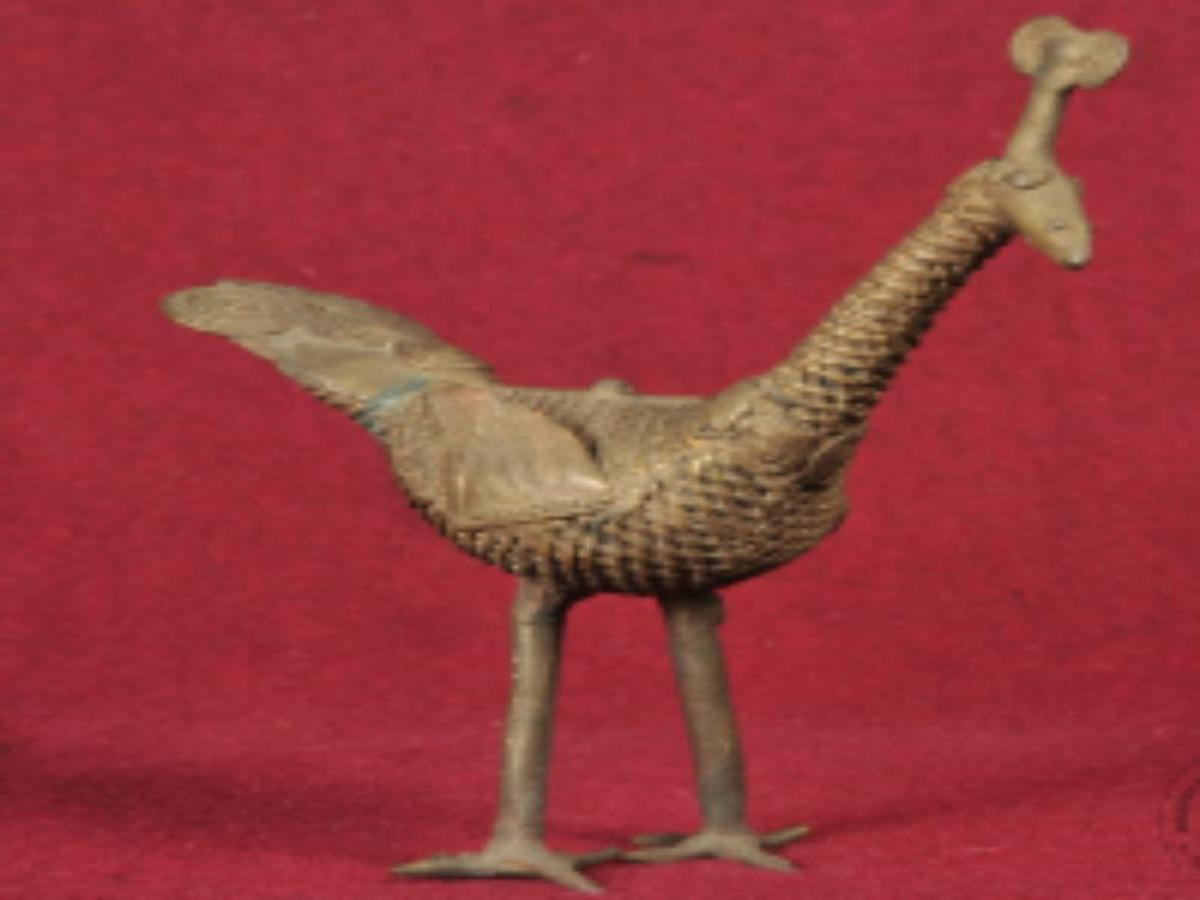State
Tribe Name
Art Type
short description
As an artifact created by the Gunsur Malias tribe, this peacock is perhaps one of the greatest surviving examples of indigenous metalwork. The peacock is shown in a standing, regal position and is impressive in its grandiose and detailed traditional symbolism. Its head wears a crown of feathers-an unmistakable special mark that makes it look very royal. Its two wings have been carved as though they are meeting in perfect balance, emphasizing, on the other hand, the natural aestheticism of the peacock. The body of the sculpture is covered by a pattern of rhomboid designs, which is a common theme of tribal metalwork that signifies continuity and harmony in nature. Another distinct part of the sculpture is the tail, which is decorated with circular designs that are possibly indicative of the "eyes" of the peacock's tail-feathers in Indian thought concerning its beauty, protection, and watchfulness.
Thumbnail

Filter Postion
Left
Filter Background
Off
Theme
Filter Header Image

content
Image

description
As an artifact created by the Gunsur Malias tribe, this peacock is perhaps one of the greatest surviving examples of indigenous metalwork. The peacock is shown in a standing, regal position and is impressive in its grandiose and detailed traditional symbolism. Its head wears a crown of feathers-an unmistakable special mark that makes it look very royal. Its two wings have been carved as though they are meeting in perfect balance, emphasizing, on the other hand, the natural aestheticism of the peacock. The body of the sculpture is covered by a pattern of rhomboid designs, which is a common theme of tribal metalwork that signifies continuity and harmony in nature. Another distinct part of the sculpture is the tail, which is decorated with circular designs that are possibly indicative of the "eyes" of the peacock's tail-feathers in Indian thought concerning its beauty, protection, and watchfulness.
This object was produced by antimicrobial casting in the early lost-wax, a process whereby a wax model is cast for a mold, which is then replaced by molten metal. The local name for the technique is Dhokra, although there are different practices across different regions. It is laborious and has been traditionally passed on from generation to generation. The art is retained as part of the heritage by the Gunsur Malias tribe, thus making a significant contribution towards the overall rich fabric of tribal crafts of India. Not only does it serve as a decorative piece; it is a cultural symbol of identity and art of the tribe
This object was produced by antimicrobial casting in the early lost-wax, a process whereby a wax model is cast for a mold, which is then replaced by molten metal. The local name for the technique is Dhokra, although there are different practices across different regions. It is laborious and has been traditionally passed on from generation to generation. The art is retained as part of the heritage by the Gunsur Malias tribe, thus making a significant contribution towards the overall rich fabric of tribal crafts of India. Not only does it serve as a decorative piece; it is a cultural symbol of identity and art of the tribe
Image Mode
landscape
promoted
On
Verified
Off
